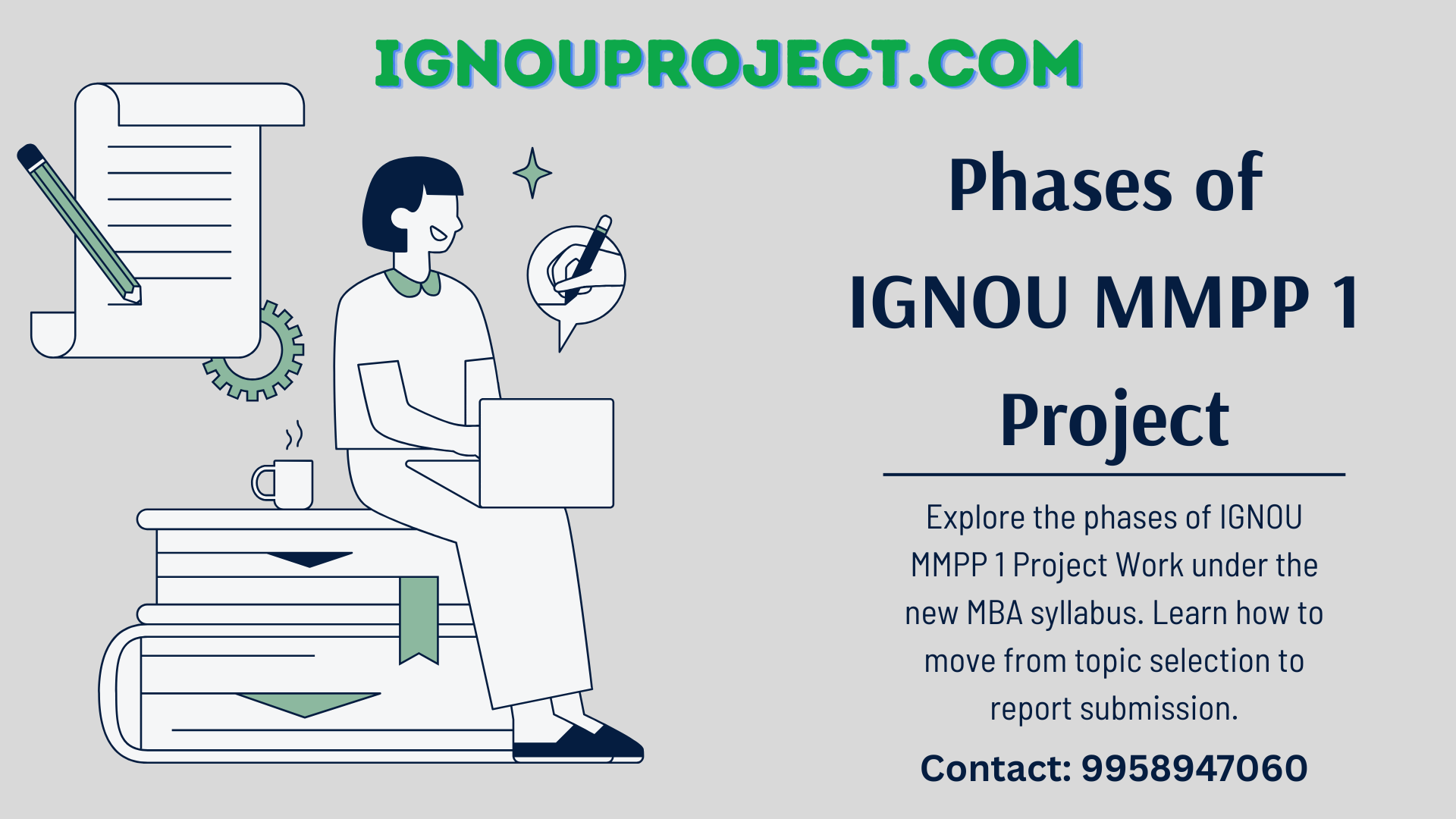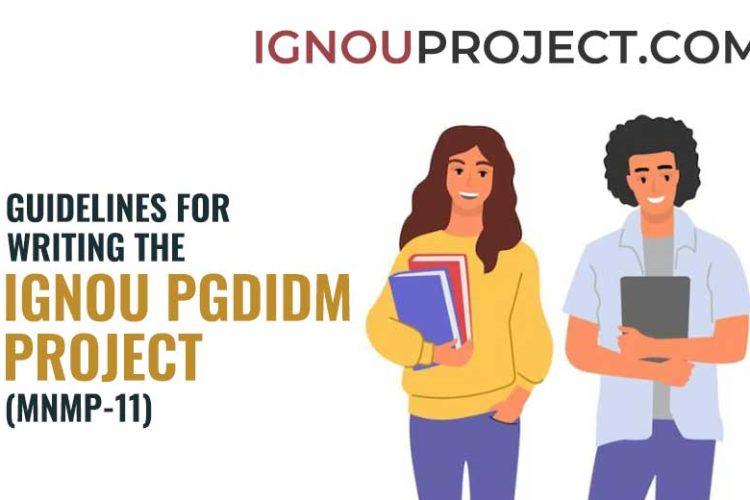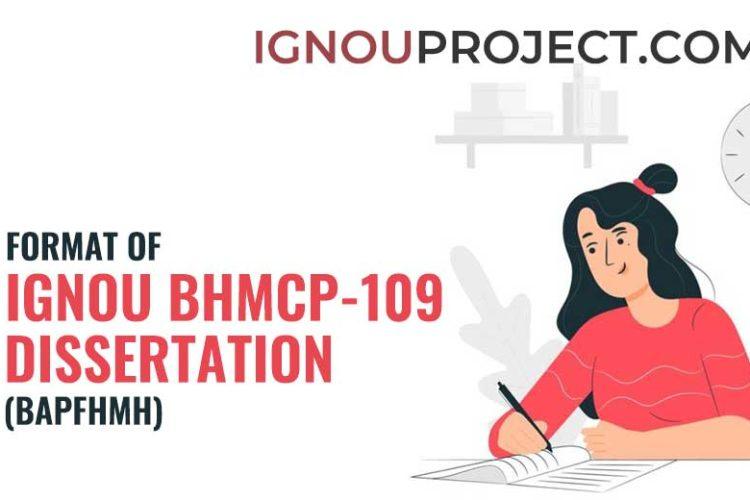
Understanding of the Phases of IGNOU MMPP 1 project work is a necessary part to earn MBA degree in IGNOU. It provides students with the opportunity to apply their theoretical knowledge to practical, real-world scenarios. Structured in phases, this project is intended to help students stay organized, focused, and aligned with the expectations of the updated IGNOU MBA syllabus.
If you’re just getting started with this course, we recommend first reading Understanding an IGNOU MMPP 1 Project to get an overview of its structure and objectives.
Whatsapp us to get the Personalized (Customized) IGNOU MMPP 1 Project Report and Synopsis for MBA
Download Link for IGNOU MMPP 1 Project (MBA)
Planning to write an IGNOU MMPP-1 Synopsis (MBA)
You must include the following information in your IGNOU MMPP-1 synopsis:
1) Formulation of the problem and selection of a topic for the project
This is the foundation of your entire project. In this phase, you must select a topic that is relevant to your area of specialization — be it Marketing, Finance, Human Resource Management, or Operations.
A well-defined problem statement helps provide direction. Your topic should:
- Be practical and researchable.
- Address a real issue or gap in the field.
- Be approved by your academic guide.
Spending time on brainstorming and fine-tuning your topic is essential to avoid revisions later.
2) The aims of the study
Once the topic is finalized, the next step is to define your project’s aims and objectives. These provide clarity on what you intend to accomplish.
Examples of objectives include:
- To analyze the impact of customer loyalty programs on retention.
- To evaluate the effectiveness of digital marketing strategies in startups.
Each aim should be specific, achievable, and measurable within the given timeframe and resources.
3) Concerns with Research (Research Questions)
The research questions or concerns are derived from the objectives of your study. They are the specific queries that your research will attempt to answer.
Examples:
- What are the key drivers of customer satisfaction in e-commerce?
- How does employee engagement affect productivity in service industries?
Clearly framing these questions helps to guide your methodology and data collection approach.
4) Any theories that have been developed (Literature Review)
This phase involves reviewing existing literature and theoretical frameworks relevant to your topic. It establishes the academic background and context for your research.
Tasks in this phase include:
- Identifying previous studies and findings.
- Discussing theories and models related to your area of interest.
- Justifying why your study is necessary.
This step not only supports your arguments but also adds credibility to your report.
5) Research Methodology and Data Collection
Here, you detail how you will conduct your research. This includes:
- Research design (qualitative, quantitative, or mixed).
- Data collection methods (surveys, interviews, case studies).
- Sampling strategy and tools.
You should also mention:
- How you will ensure reliability and validity.
- Ethical considerations and consent processes.
- Limitations of your chosen methodology.
A clear plan here will make your data collection smoother and your results more credible.
6) Data Analysis and Findings
After data collection, the next phase is data analysis. This is where you make sense of the raw information and identify patterns, trends, and insights.
Depending on your research type:
- Quantitative studies may involve statistical tests, graphs, and tables.
- Qualitative research may require thematic analysis or coding.
Your findings should directly address the research questions and objectives established earlier.
7) Conclusions and Recommendations
The final phase involves summarizing your research findings and providing actionable recommendations.
In this section:
- Present your conclusions clearly and concisely.
- Relate your results back to the problem statement and objectives.
- Suggest practical steps or policy changes based on your study.
- Acknowledge any limitations and propose areas for further research.
You will also include annexures like questionnaires, raw data, and certificates, along with references and a bibliography.
Planning to write an IGNOU MMPP-1 Project Report (MBA)
The two most crucial components of any project are originality and clarity. You can use anti-plagiarism software to check the uniqueness of your project report. Keep in mind that your IGNOU MMPP-1 Project Report will evaluate your analytical and communication skills. This kind of writing is not just for expressing your feelings or building a story. Additionally, it is a form of thinking-organization practice. Therefore, keep the following points in mind while you write your IGNOU MMPP-1 project report:
- The project’s subject determines the length of the IGNOU MMPP-1 Project Report. One should prepare the IGNOU MMPP-1 Report with a length of between 15000 and 2000 words and not more than 60 pages, typed in one-and-a-half spacing.
- You should divide your IGNOU MMPP-1 report into approximately four to five chapters. Sections and subsections divide each chapter. This helps your project maintain consistency and prevents different ideas from pouring into various regions.
- It is crucial to write an introduction since it creates a point of entry for your project. After that, you should state specific objectives and targets.
- To a certain extent, the strength of your approach dictates the quality of your project. As a result, procedures should be clearly described. To be more exact, methodology refers to the theoretical perspectives and inquiry logic that guide research, (ii) data collection procedures, and (iii) data analysis tools or processes.
You should structure the IGNOU MMPP-1 Project Report as follows:
- Cover page: On the first page of the IGNOU MMPP-1 Dissertation, provide the title of the project, your name, address, the year, and your enrollment number. (as described in annexure B to this handbook)
- On the second page, the contents of the IGNOU MMPP-1 Dissertation should be listed, followed by a listing of tables, maps, and figures/illustrations on the third page.
- The fourth page is devoted to acknowledgments.
- The fifth page is for alphabetical listing of abbreviations.
- Beginning on the sixth page, you must present a summary of your project, including its strategy, objectives, research methodology, including a description of the tools or methodologies utilised for data collecting and analysis, and the study’s constraints. This will act as the introduction of an IGNOU MMPP-1 Report.
- The second chapter will serve as the project’s primary body.
- In the conclusion chapter, you will provide the findings of the study and, if appropriate, your suggestions.
Final Thoughts
Understanding the distinct phases of IGNOU MMPP 1 Project Work can dramatically improve your approach, focus, and outcome. Each phase — from topic selection to final report — plays a vital role in shaping a successful and academically sound project.
For a foundational understanding before diving into execution, check out our guide on “Complete IGNOU MBA Project Guidelines for IGNOU MMPP 001 Project Course”.
Ready to get your IGNOU MMPP 1 Project Report and Synopsis Sample PDF for MBA?
- Call us or WhatsApp us at: 9958947060, 9354637830


PSR PRASAD
September 4, 2022To whom we to submit (ADDRESS) the MMPP-1 Project Report of MBA (BANKING AND FINANCE)-MBF.